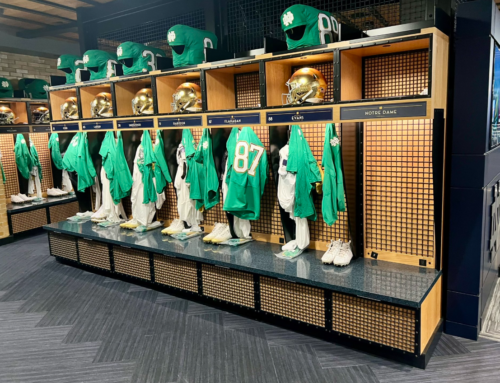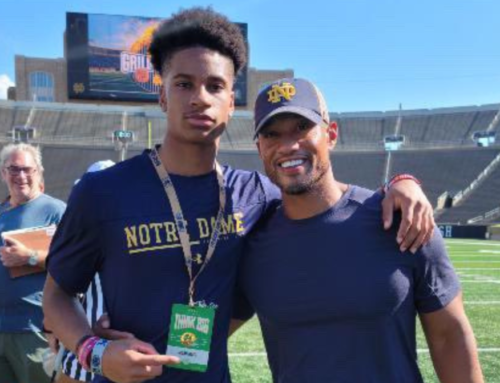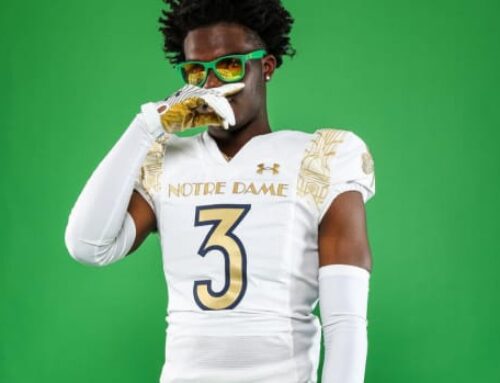The NBA is set to have a historic draft in a couple years. In the modern era, following a legal challenge by Spencer Haywood in 1971 that made its way to the Supreme Court, basketball players were allowed to jump directly to the NBA from high school although it was exceedingly rare. That changed in the 1990’s when Kevin Garnett made the jump which spawned a new era of young prep players joining the NBA. Things culminated in 2004 with LeBron James but during contentious CBA discussions in 2005 the league instituted the so called “one-and-done” rule that kept players out of the NBA for a year out of high school.
This is set to change in 2022 when the NBA is reverting back to allowing players directly out of high school resulting in the so-called “Double Draft.” That’s when we’ll see the top college freshmen from the 2021 class drafted alongside the top high school seniors of the 2022 class, the latter including Emoni Bates who is considered one of the best prospects in many years.
Although it’s not quite the same set up, college football could be dealing with a “Double Class” as the COVID pandemic may force the 2020 recruits to enroll but basically gain no experience over their younger 2021 brethren. Here are several issues that would need to be worked out in the large and murky waters of college football:
*Honor All Scholarships?
The NCAA D-1 council will be meeting Wednesday, August 19th and is expected to tackle this issue. It’s expected that they will rule in favor of forcing universities to honor all scholarships, of course there’s also an anticipation that there could be a myriad of string attached to such a proclamation.
*Extend Eligibility & 5-Year Clock
It’s expected this will be a no-brainer for the NCAA to rule in favor of for college football. On the surface, it seems easy. However, as we’ll see below it opens the door to a bunch of other issues.
*Money Issues
How many college programs will be able to afford extra scholarships? Schools can apply through the NCAA Student Assistant Fund to pay for extra scholarships although it’s not clear how much of this money is available nation-wide. Inevitably, the extra scholarships will end up hurting the smaller and poorer schools, all of whom have witnessed their athletic departments budgets being blown to smithereens since March.
*How Many Scholarships?
Word across the country is that, surprise surprise, coaches want their rosters extended and more scholarships available in 2021 should 2020 get cancelled. We’ve already discussed how much money issues are going to make this incredibly difficult at a lot of schools.
The number I’ve seen floated around the most is a 95-man limit. Is that large enough?
Let’s take Notre Dame’s roster as an example. If 2020 is cancelled in our hypothetical let’s say Ian Book, Jeremiah Owusu-Koramoah, and Liam Eichenberg all leave for the NFL while 4 other players transfer after graduating and only an additional 5 current graduate players stick around for another season. Using Notre Dame’s current 18 commits for the 2021 class that would mean the Irish will be at 97 scholarships.
Will programs have to shorten their 2021 needs and even extend that to their 2022 recruiting class and beyond pending a return to the 85-man limit? Is this an open invitation for abuse by some of the shadier programs?
*Early Enrollees
The NCAA has a tricky problem on their hands with the early signing period coming up quickly and early enrollees potentially on campus in just over 4 months. If a program ends up playing in the spring are these freshmen going to be allowed to participate? Will they be barred from playing? If there’s a spring 2021 and fall 2021 season will 2021 recruits be on 2 years of eligibility remaining by spring 2022 if they participate this upcoming spring?
Conclusion
All signs are pointing to the NCAA ready to be very accommodating to players and their eligibility. It’s very possible they rule that people can play up to 50% of games this year (if it happens) and still retain a year. There are rumors they may move that up to as high as 60% of the games. In the event of a full fall cancellation or suspension is it smart to increase this limit even more should games be played in the spring? Is it possible we’ll experience a world where 2021 EE recruits will be able to play in upwards of 80% of spring 2021 games and still retain 4 years of eligibility?
I honestly don’t know how it will work out.
One thing seems certain–roster management tactics could get even uglier in this new world. Give schools 100 to 105 scholarships and the rich could get richer and small schools could fall behind in unrecoverable ways with less money for grant-in-aid. Limit the scholarships to 95 total (or fewer) and you’re asking programs to trim all of the fat off their roster.
We’ll likely see a complete free-for-all transfer season either way. The NCAA is likely to adopt a policy where no one has to sit out if they transfer (and there’s likely no going back on this in the future given the pro-player landscape) so the good news for smaller programs is that they could be receiving plenty of extra help (if they can afford it!) from the power conference rosters.
At a place like Notre Dame, I would imagine nearly all players who are nearing graduation and not in the two-deep will be having discussions about leaving once they’ve received their degree. There are always transfers for players not feeling like they are in the mix, and with all the other events taking place, I can see a 50% increase in these types of players knowing they won’t be playing any time soon in 2020 or 2021. In the end, I wouldn’t be shocked if the NCAA increases the limit to 95 scholarships but a school like Notre Dame drops down to 87 or 88 players when it’s all said and done and a “normal” football season takes place, likely in the fall of 2021.





If everyone gets a pause on their eligibility, won’t it be a problem for like 3 or 4 years? Would they need to slowly go back down to 85? Like 95 next year. 91 in two years. 87 in three years.
I was sort of thinking that this might have a more long-lasting ripple effect. Perhaps “traditional blue bloods” might have to pass on a few players they’d otherwise offer to because of numbers. Might allow a middling/terrible team like an Illinois, Cal, Kansas or GT to punch up a bit and snag a few more borderline elite/good recruits.
This could be right, for example I wonder if ND will preemptively just take a really small 2022 class (like 15) because of this, plus we’ve had a ton of kids redshirt over the past few cycles.
The problem here is that the traditional blue bloods hold all the power. They won’t allow changes to happen that allow lesser teams to benefit at the their expense.
Yup, it would have to go down slowly with some sort of plan like that.
It’s going to be a tough couple of years for high school athletes then. Because in the big scheme of things it means less scholarships to incoming players (because of all the left over eligibility from current players). We are essentially going to be carrying two years worth of scholarships in one class next year – this years freshmen and next year’s freshmen, i.e. they will all have 5 years to play 4. That’s only going to resolve after 4-5 years. Each other class is going to have to be slightly smaller.
And you could say there will be more transfers but the problem is there will not really be many spots for players to transfer to. Because all the other schools will have similar problems with numbers (esp. as the number gets closer to 85 before the 4-5 years has gone by).
One thing that may happen is that there will be some players who will not want a 5th year, especially if the rosters are bigger and they have a smaller shot of getting meaningful reps. Some might prefer to move on with their lives / careers if they are not likely to make it to the NFL
Yea, I think if there are less 5th years it would be less because rosters are bigger (5th years are usually priority and it’s rare that a starter or high-end contributor doesn’t retain his starting spot or high-end contributing spot by coming back – and the one’s who weren’t playing rarely come back). What might entice less to take the 5th year is that it’ll be their 6th year on campus then and maybe they really do want to move on with their lives like you said. But even then that’s only going to be around the edges (and was going to increasingly become a problem) because we’ve had not too many 5th years anyway. It was going to become increasingly an issue because of the new red-shirt rule.
When they did this to the spring sports last year it quickly became a free for all where the bigger schools absorbed transfers from the small schools who couldn’t afford to keep 5th years or decided not to accept 5th years by rule.
Did they offer extra years of eligibility to basketball players? I didn’t think they did (given that they played basically a whole season without the final tournaments).
They did not. There was some public chatter of doing that, but basketball coaches wanted no part of it and it went nowhere.
No matter what the topic is, the answer to this question is ‘yes’.
https://www.espn.com/college-sports/story/_/id/29712267/ncaa-votes-give-extra-year-eligibility-division-fall-athletes
If the NCAA put a cap at 95 players, why don’t you think ND would try to reach the cap? It seems to me that they could offer more players who are raw with high ceilings.
I’m sure they will try! I think it’ll be a lot like a normal recruiting cycle situation (make it as tight as possible as late in the summer/fall as possible with the numbers) but just a harder thing to pull off.
I’m sure coaches all over the country will prioritize new recruits over older non-impact players. If everyone can come back in 2021 that will be difficult to pull off and way more roster management “tactics” needed.